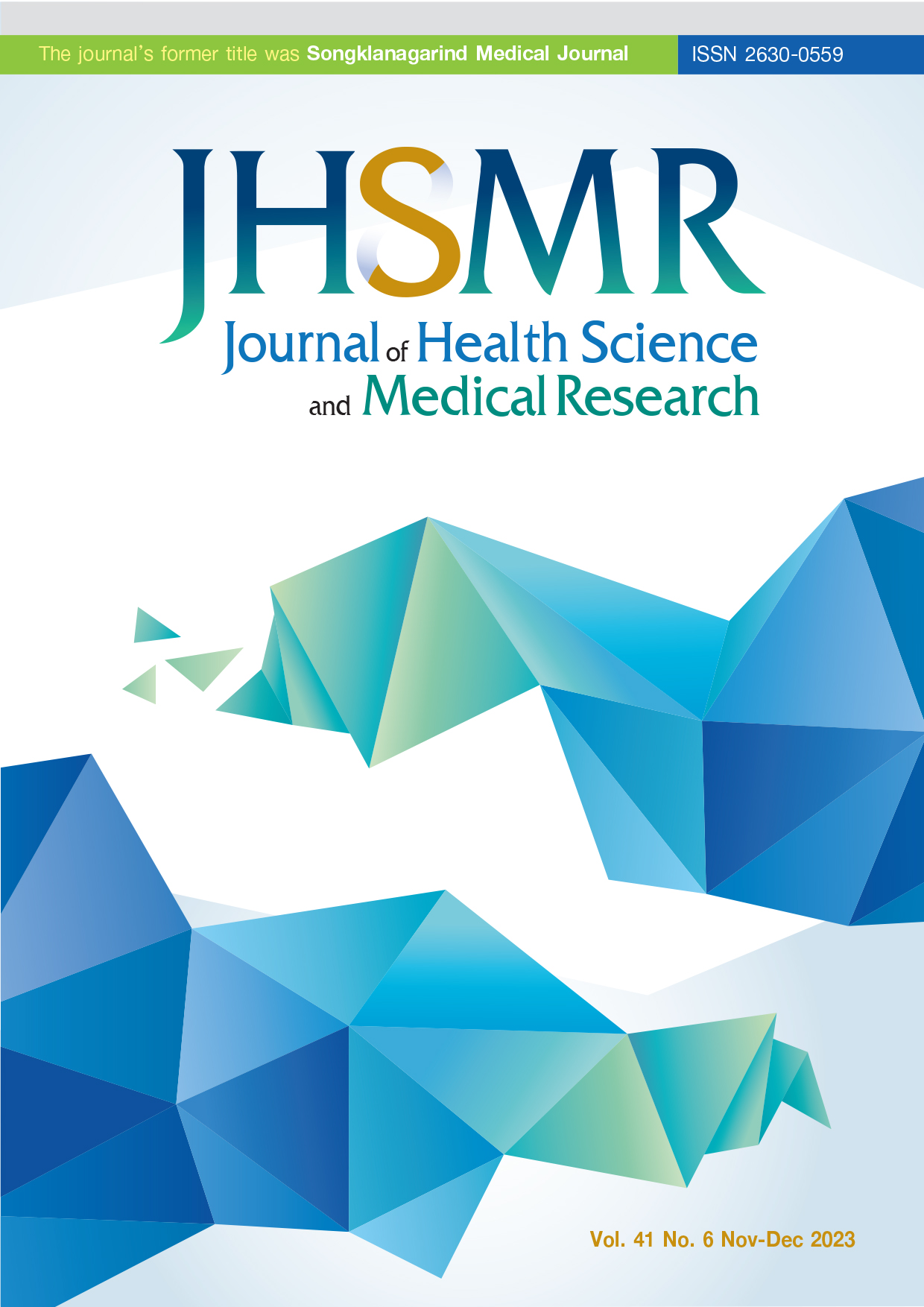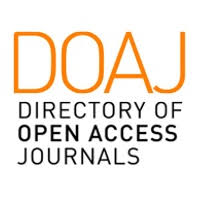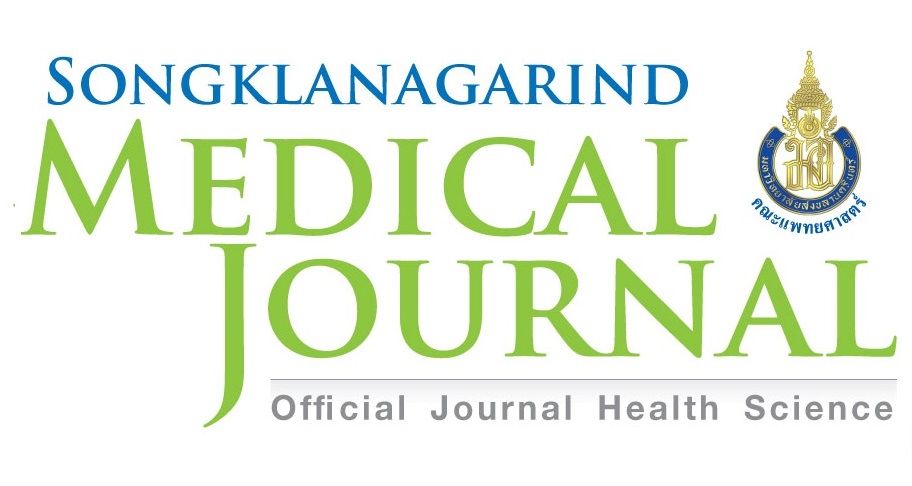The Effect of Augmentative Alternative Communication on Anxiety in Patients under Mechanical Ventilators in the Intensive Care Unit: Pilot Study
DOI:
https://doi.org/10.31584/jhsmr.2023967Keywords:
anxiety, augmentative alternative communication, intensive care unit, mechanical ventilatorAbstract
Objective: One of the main problems, for patients under a mechanical ventilator, is their inability to verbally communicate. This condition can cause psychological problems; such as anxiety. Additionally, as anxiety must be treated immediately to prevent adverse effects for the patient, one effective strategy is augmentative alternative communication (AAC). Hence, the purpose of this study was to determine the effect of AAC on anxiety in patients, who are on mechanical ventilators.
Material and Methods: This study was pre-experimental, consisting of a one-group pre-test post-test design: conducted using consecutive sampling. The AAC was conducted using a book while the anxiety instrument was the face anxiety scale (FAS). Conducting AAC and measurements of anxiety were carried out by a research assistant. Anxiety was based on anxiety scores and physiological parameters via. Bivariate data analysis using Wilcoxon Sign Rank Test.
Results: The patient’s level of anxiety before and after AAC had difference scores of 2, wherein the pre-test was moderate anxiety and the post-test after being given AAC was no anxiety. The physiological parameters, before and after AAC, did not change clinically, because they were still within normal limits. Wilcoxon Sign Rank test results (p-value=0.001) with Cramer’s v value (0.21)
Conclusion: AAC has a positive effect having statistically and clinically significant changes in anxiety and has a medium effect size on anxiety level.
References
Nates JL, Price KJ. Oncologic critical care. Oncol Crit Care 2019;7:100–209. doi: 10.1007/978-3-319-74588-6.
Tate JA, Devito Dabbs A, Hoffman LA, Milbrandt E, Happ MB. Anxiety and agitation in mechanically ventilated patients. Qual Health Res 2012;22:157–73.
Li J, Zhan QY, Wang C. Survey of prolonged mechanical ventilation in intensive care units in mainland China. Respir Care 2016;61:1224–31.
Taşlı H, Kara U, Gökgöz MC, Aydın Ü. Endotrakeal entübasyon sonrası gelişen vokal kord paralizisi. Turk Anesteziyoloji ve Reanimasyon Dern Derg 2017;45:321–2.
Khalaila BR, Zbidat W, Anwar K, Bayya A, Linton DM, Sviri S. Communication difficulties and psychoemotional distress in pastients recieving mechanical ventilation. Am J Crit Care 2011;20:470–9.
Koszalinski RS, Tappen RM, Hickman C, Melhuish T. Communication needs of critical care patients who are voiceless. Comput Informatics Nurs 2016;34:339–44.
Guru YY, Suryani S, Nursiswati SK. Communication needs analysis patients treated in the attached ventilator for intensive care units RSUP Dr. Hasan Sadikin Bandung [monograph on the Internet]. Bandung: Fakultas Keperawatan UNPAD; 2015 [cited 2023 Feb 28]. Available from: https://pustaka.unpad.ac.id/archives/134119
Kim AY, Sim IO. Communication skills, problem-solving ability, understanding of patients’ conditions, and nurse’s perception of professionalism among clinical nurses: a structural equation model analysis. Int J Environ Res Public Health 2020;17:1–14.
Grossbach I, Stranberg S, Chlan L. Promoting effective communication for patients receiving mechanical ventilation. Crit Care Nurs 2011;31:46–60.
Handberg C, Voss AK. Implementing augmentative and alternative communication in critical care settings: perspectives of healthcare professionals. J Clin Nurs 2016;38:42–9.
Amila A, Sitorus R, Herawati T. The influence of 'Augmentative Alternative Communication' to the community ability and depression rates of the patient with aphasia motoric problem. J Keperawatan Padjadjaran 2013;1:131–43.
McKinley S, Madronio C. Validity of the Faces Anxiety Scale for the assessment of state anxiety in intensive care patients not receiving mechanical ventilation. J Psychosom Res 2008;64:503–7.
Aghaie B, Rejeh N, Heravi-Karimooi M, Ebadi A, Moradian ST, Vaismoradi M, et al. Effect of nature-based sound therapy on agitation and anxiety in coronary artery bypass graft patients during the weaning of mechanical ventilation: a randomized clinical trial. Int J Nurs Stud 2014;51:526–38. doi: 10.1016/j.ijnurstu.2013.08.003.
Rosenthal R. Parametric measures of effect size. In: Cooper H, Hedges LV, editors. The handbook of research synthesis. New York: Russellsage Foundation; 1994;p.231–44.
Baumgarten M, Poulsen I. Patients’ experiences of being mechanically ventilated in an ICU: a qualitative metasynthesis. Scand J Caring Sci 2015;29:205–14.
Karlsson V, Bergbom I, Forsberg A. The lived experiences of adult intensive care patients who were conscious during mechanical ventilation: a phenomenological-hermeneutic study. Intensive Crit Care Nurs 2012;28:6–15. doi: 10.1016/j.iccn. 2011.11.002.
Engström Å, Nyström N, Sundelin G, Rattray J. People’s experiences of being mechanically ventilated in an ICU: a qualitative study. Intensive Crit Care Nurs 2013;29:88–95. doi: 10.1016/j.iccn.2012.07.003.
Jansson S, Martin TRS, Johnson E, Nilsson S. Healthcare professionals’ use of augmentative and alternative communication in an intensive care unit: a survey study. Intensive Crit Care Nurs 2019;54:64–70. doi: 10.1016/j.iccn.2019.04.002.
Jackson JC, Girard TD, Gordon SM, Thompson JL, Shintani AK, Thomason JWW, et al. Long-term cognitive and psychological outcomes in the awakening and breathing controlled trial. Am J Respir Crit Care Med 2010;182:183–91.
Chlan L. Patterns of anxiety in critically ill patients receiving mechanical ventilatory support. Bone 2011;23:1–7.
Herbert A, Cruickshank JK, Laurent S, Boutouyrie P, Shimada K, Kario K, et al. Establishing reference values for central blood pressure and its amplification in a general healthy population and according to cardiovascular risk factors. Eur Heart J 2014;35:3122–33.
Rex A, Fink H. Neurotransmitter and behaviour: serotonin and anxiety. Germany: Freie Universitat; 2011.
Montoya A, Bruins R, Katzman MA, Blier P. The noradrenergic paradox: implications in the management of depression and anxiety. Neuropsychiatr Dis Treat 2016;12:541–57.
Potter PA, Perry AG. Foundamental of nursing: concepts. Process and practice. Edisi 4. Jakarta: EGC; 2006.
Tate JA, Devito Dabbs A, Hoffman LA, Milbrandt E, Happ MB. Anxiety and agitation in mechanically ventilated patients. Qual Health Res 2012;22:157–73.
Yuliana F. The effect of music therapy combination with deep breathing exercise on the anxiety and physiological parameter to the clients in mechanical ventilation. Univ Airlangga Repos 2018;12–31.
Smeltzer SC, Bare BG, Hinkle JL, Cheever KH. Brunner and Suddarth’s textbook of medical surgical nursing. 12th ed. Philadelphia: Lipincott WIlliams and Wilkins; 2010.
Trotman GP, Veldhuijzen van Zanten JJCS, Davies J, Möller C, Ginty AT, Williams SE. Associations between heart rate, perceived heart rate, and anxiety during acute psychological stress. Anxiety Stress Coping 2019;32:711-27. doi: 10.1080/10615806.2019.1648794.
Williams SE, Veldhuijzen van Zanten JJCS, Trotman GP, Quinton ML, Ginty AT. Challenge and threat imagery manipulates heart rate and anxiety responses to stress. Int J Psychophysiol 2017;117:111–8. doi: 10.1016/j.ijpsycho.2017.04.011.
Nursing Center. Mechanical ventilation settings and basic modes. New York: Lippincott Nurs Cent 2019;p.1–5.
Henry SG, Fuhrel-Forbis A, Rogers MAM, Eggly S. Association between nonverbal communication during clinical interactions and outcomes: a systematic review and meta-analysis. Patient Educ Couns 2012;86:297–315. doi: 10.1016/j.pec.2011.07.006.
Pina S, Canellas M, Prazeres R, Lopes J, Marcelino T, Reis D, et al. Augmentative and alternative communication in ventilated patients: a scoping review. Rev Bras Enferm 2020; 73:e20190562.
Broyles L, Tate J, Happ MB. Use of augmentative and assistive communication strategies by family members in the ICU. Am J Crit Care 2012;21:21–32.
Levinson W, Lesser CS, Epstein RM. Developing physician communication skills for patient-centered care. Health Aff 2010; 29:1310–8.
Nilsen ML, Sereika SM, Hoffman LA, Barnato A, Donovan H, Happ MB. Nurse and patient interaction behaviors’ effects on nursing care quality for mechanically ventilated older adults in the ICU. Res Gerontol Nurs 2014;7:113–25.
El-Soussi AH, Elshafey MM, Othman SY, Abd-Elkader FA. Augmented alternative communication methods in intubated COPD patients: does it make difference. Egypt J Chest Dis Tuberc 2015;64:21–8. doi: 10.1016/j.ejcdt.2014.07.006.
Margret G. The effectiveness of vidatak-ez board on anxiety and frustation among mechanically ventilated patient in Ganga Hospital, Coimbatore. South India: he Tamil Nadu Dr. M.G.R. Medical University; 2016.
Hosseini SR, Valizad-Hasanloei MA, Feizi A. The effect of using communication boards on ease of communication and anxiety in mechanically ventilated conscious patients admitted to intensive care units. Iran J Nurs Midwifery Res 2018;23:358–62.
Downloads
Published
How to Cite
Issue
Section
License

This work is licensed under a Creative Commons Attribution-NonCommercial-NoDerivatives 4.0 International License.
























